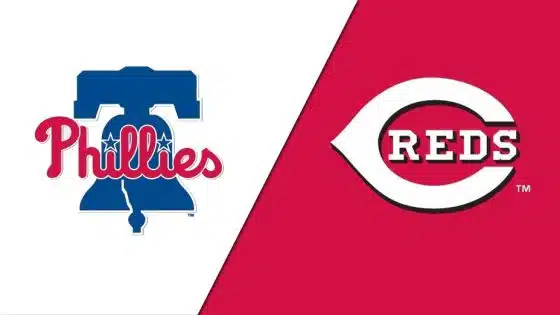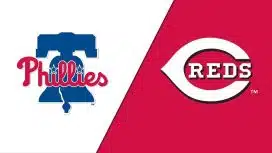By: Matt Veasey, Sports Talk Philly Staff
There are old-timers, and then there are OLD-timers. Roy Thomas is the latter, a ballplayer who most modern Philadelphia Phillies fans have never heard of previously.
Thomas appeared with the Phillies in parts of a dozen seasons, first for a decade straight from 1899-1908, and then again over his final two seasons in 1910-11.
His brother Bill played one season in the big leagues, also with the Phillies, for six games in the 1902 season.
Thomas was a local product, born in Norristown and raised in the small community of Sheetz's Mill, just outside of Norristown.
Per Bill Lamberty at SABR, Thomas was raised by strict Christian parents who forbade him playing on Sundays, a practice that he would later take into his professional baseball career.
Thomas went to the University of Pennsylvania as well, earning an Ivy League degree in 1894, and starring for the Quakers baseball team.
After graduation, Thomas began to play semi-pro ball in the area. Finally coming to the attention of pro scouts, Thomas broke in with the Phillies in 1899 at age 25.
Thomas put together an outstanding 13-year big league career spent mostly with the Phillies. Upon his retirement, he was the head baseball coach at Penn for a decade, compiling a 106-43-3 mark from 1909-19.
Career Accomplishments
Thomas was the very definition of the pesky, speedy leadoff center fielder. He led the National League in walks in six of the seven seasons between 1900-06, and tied for the league lead in 1907. He also led the NL in runs scored (132) and plate appearances (675) in 1900.
On the base paths, Thomas led the Phillies in stolen bases four times between 1899-1904, though his 42 stolen bases as a rookie would prove to be his high-water mark.
Because of his propensity for fouling off pitches in order to try and wear down the opposition pitcher, the National League actually changed its rules in 1901, for the first time making a fouled off pitch a strike.
Noted baseball researcher Bill James has reported that Thomas is the only player in Major League Baseball history to score three times as many runs as he drove in.
At the time of his retirement, Thomas held the National League record for putouts by a center fielder, and the MLB record for fielding percentage at the position. He led the NL in total chances on two occasions, in putouts two times, and in assists once.
Thomas still ranks 20th in walks percentage, 29th in on-base percentage, and 84th in walks among all players who have ever performed at the big league level.
Thomas ranks 18th on the Philadelphia Phillies club all-time Hits (1,364) list, 20th in batting average (.295), 8th in runs scored (923), 2nd in on-base percentage (.421), and is tied with Richie Ashburn for 3rd all-time among Phillies players with 946 walks. He had a 36.5 WAR mark while with the Phillies.
Most Memorable Moment
As related earlier, per Lamberty in his piece for SABR, Thomas was so adept at fouling off pitches as a rookie that the NL would change its rules in 1901, and the AL would follow suit two years later.
After watching the pesky Thomas foul off numerous pitches during one 1900 game, Brooklyn Superbas manager Ned Hanlon told him "Have your fun now, kid, because we're going to take care of you for next year."
Hanlon's Brooklyn club would win the NL pennant that year, finishing eight games ahead of the third place Phillies.
The league did indeed try to "take care of" Thomas, with the change of a foul ball counting as a strike during the first two such occasions becoming a change that would permanently impact the sport. It failed to impact Thomas much, as shown by his league-leading walks totals over the next half-dozen seasons.
Reasons for Ranking Placement
Thomas had two seasons as a 5+ WAR player (just missing a third with his 4.9 mark in his rookie campaign) and another seven Phillies seasons as a 2+ WAR player. This gave him a total of 22 "WAR points" in our ranking formula (explained below).
His dozen years in a Phillies uniform gave him another two points, and he also received points for ranking among the organizational top 25 in batting average and hits.
Formula Explanation
The player rankings formula combines both traditional and advanced statistics/metrics and assigns a point total to each category. These statistics only reflect the player's Phillies career.
Previous Entries





